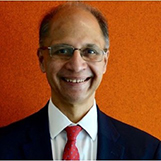Rethinking the Trading Desk to Reduce Risk, Increase Efficiencies and Attract Top Talent
A new trading desk platform is emerging that will benefit both the financial services industry and its workforce
- |
- Written by Likhit Wagle, General Manager, Global Banking & Financial Markets at IBM

While some major banks are calling employees back to their main offices, a new trading desk platform is emerging that will benefit both the financial services industry and its workforce, and it is underpinned by dramatic transformations.
This evolution will require financial institutions to double down on talent and technology. First, there needs to be a reimagining of organizational culture and ways of working prized by highly skilled individuals. Second, there must be a focus on the strategic development of secured and regulated technology environments that enable quant traders and data scientists to model trading algorithms from decentralized locations, as well as the use of artificial intelligence to explore new, unconventional trading ideas informed by unstructured, alternative datasets.
Setting the Stage
When the COVID-19 pandemic accelerated both transformations beginning last year, forcing centralized and co-located trading operations to rapidly transform into virtual, decentralized services, something interesting and unexpected happened. There were no significant disruptions, and regulators temporarily eased requirements in order to accommodate extraordinary circumstances. Worth noting, many banks’ post-trading systems struggled to deal with an exorbitant increase in trading volumes, posing concerns about the resilience of settlement operations, adding more reasons to rethink trading architectures.
Now that we know this model is possible in the short term, even practical, and it can be stabilized for the long term, the financial services industry needs to think strategically how to leverage this opportunity permanently and consider moving to a hub-and-spoke structure that maintains a scaled back city center trading floor augmented by multiple remote locations, including work from home.
The advantages of this design are three-fold. Satellite locations are less costly to operate than city center locations, they can be located in areas to facilitate attracting key skill profiles, such as quantitative experts and data scientists from local universities, and they provide the lifestyle that newer generations prefer, enabling banks to better compete with fintechs.
Culture is Driving Change
When we think of the traditional trading floor, we often imagine a throng of traders closely packed, jostling one another, and erupting with emotion over swings in the markets. The reality is that the most gifted traders today are likely to be those who embrace data, artificial intelligence, collaboration technology and are increasingly a workforce that is accustomed to a remote working environment and prioritizes a balanced work life.
In fact, a recent IBM Institute for Business Value (IBV) study found that 62% of employees want to keep their work from home arrangement – even after being vaccinated.
To recruit and retain top talent, it will be critical for organizations to pivot to a flexible workforce. This flexibility must be driven by technology components that ensure agility, control, scalability, and user experience. UX will be critical to ensuring that technology serves as an accelerant and not a hinderance.
There are advantages to compete against the job placing power of the BigTech powerhouses as well. By shifting to a flexible work policy, recruiting is now open to a larger, more remote pool of candidates. It also allows for candidates who may not have previously considered your institution – because of factors such as family care obligations or disability needs – but may now find your firm attractive.
Not as Simple as it Seems
While the cultural shift will be a necessity for all trading desk operations, there are some functions that may not perform as well from a distance. Because of this, ensuring a careful cultural shift while layering in sensitivities for in-person roles will be critical.
 For example, those on the market making desks may find themselves in office more often. These individuals tend to leverage informal communications during trading hours. This group needs to be able to learn quickly, on the job, and have instant reactions to events. Working from home could prove to be challenging – especially to workers who have less experience or may be new to the organization.
For example, those on the market making desks may find themselves in office more often. These individuals tend to leverage informal communications during trading hours. This group needs to be able to learn quickly, on the job, and have instant reactions to events. Working from home could prove to be challenging – especially to workers who have less experience or may be new to the organization.
However, the compliance team may find adapting to a flexible workplace very easy. Their job is deeply embedded in rule setting and verification and does not require as much on-the-job discussion.
A Compliant Environment
The centralized trading platforms of the past will need to become decentralized in order to truly transform the trading room.
Trading platforms based on open hybrid cloud technology and advanced analytics can be the virtual venue for resilient operations. The flexible trading floor will require new approaches to advance the use of alternative data and AI.
One way to imagine the future of the trading floor is through three individual environments:
- The first environment will envelop risks and compliance – our base for any true trading floor operations. This environment is the foundation for anything the trading floor does.
- The second environment will hold analytics and their corresponding platforms. Already in action to comply with FRTB, this environment will operate with open-analytics platforms to create new revenue streams.
- The third environment will hold everything else: sales, trading and post-trading. These functions will be tasked with developing new analytics, deploying new algorithms, embedding financial offers, and interacting with outside software vendors.
As you separate these environments, you’ll need to begin envisioning them as decentralized as well. Doing so will require a big shift in technology and a reliance on cloud, machine learning, AI and alternative datasets.
Where to Begin
With so much becoming decentralized, it can feel overwhelming to know where to begin. Think of it a bit like shopping for a house – you must have a great school for the kids, but it would be nice for you to have a two-car garage too.
By starting with the “must have,” you can eliminate other elements for the short term. For example, cybersecurity is a non-negotiable no matter where your employees are working from.
Then layer in other important elements, such as trading algorithms based on machine-learning that will really add value to trading operations.
We advise banks and asset managers to address post-trading with compliance as a top priority for remote work. This can be accomplished by leveraging intelligent workflows, the integration of analytics, artificial intelligence, machine learning and automation to perform diverse and complex activities more efficiently.
Answering the Call
Trading platforms based on open hybrid cloud technology and advanced analytics can be the virtual venue for resilient operations and a transformed trading workforce. You can learn more about this significant shift in a paper published by the IBM Institute for Business Value, entitled The Future of Trading Floors.
Remember that it all starts with a change in mindset that empowers you to reclaim top spots with clients, employees and society at large.
By building a roadmap in which the necessities are prioritized, the trading floor’s new normal will be led by secured cloud access, alternative data and AI modeling, and virtual collaboration – all while holding cybersecurity as the foundational gold standard.
Today's highly skilled global workforce is demanding a more flexible environment – are you ready to answer the call?

Likhit Wagle is General Manager, Global Banking & Financial Markets at IBM, where he has driven innovation in the financial service industry for nearly two decades. Throughout his career, Likhit has offered strategic consulting for c-level executives in areas including corporate finance, value-based management and mergers & acquisitions. Prior to joining IBM, Likhit led the M&A practice at PricewaterhouseCoopers.
Tagged under Risk Management, Technology, Feature3, Human Resources, Feature, Financial Trends, Management,













